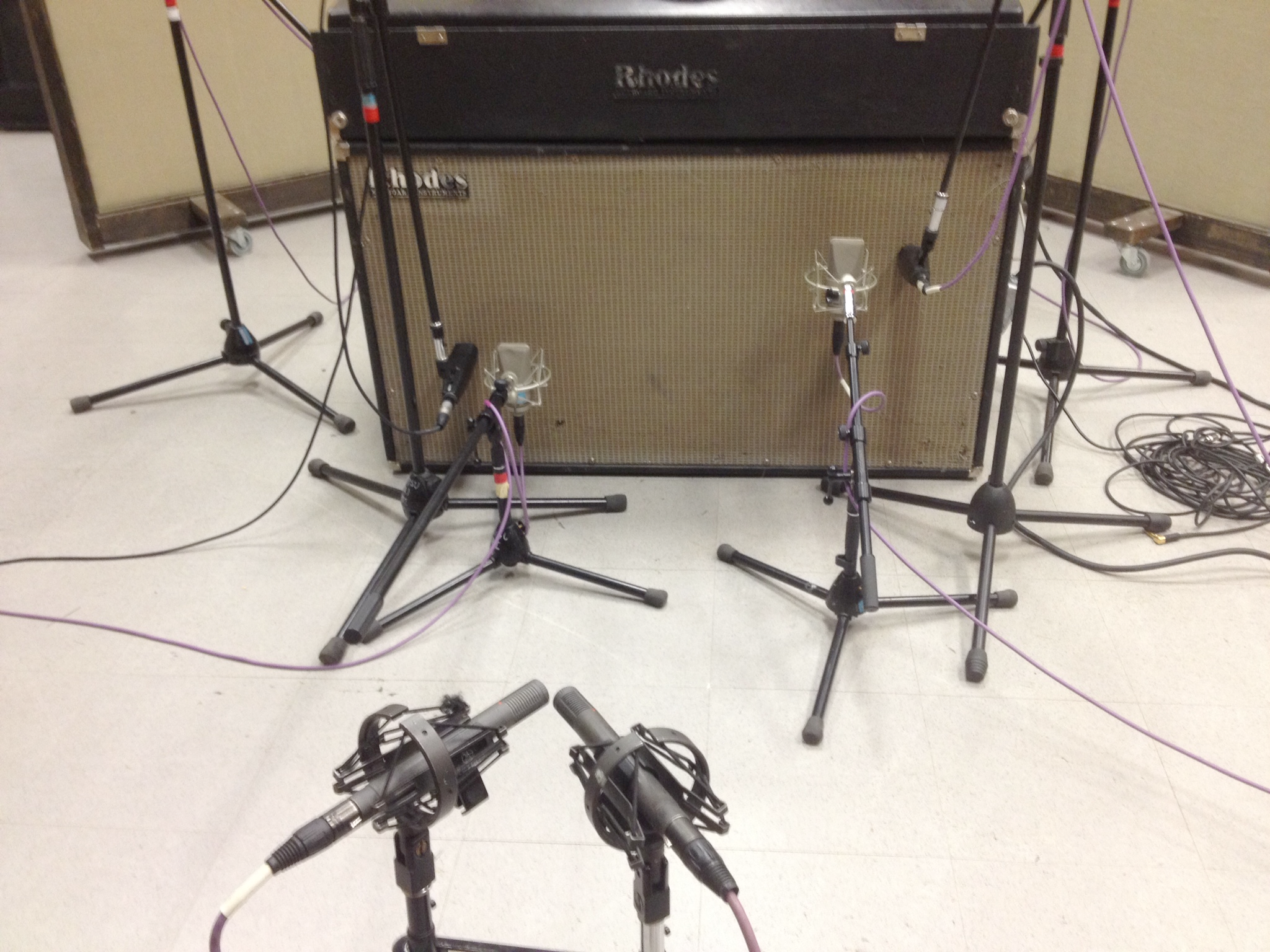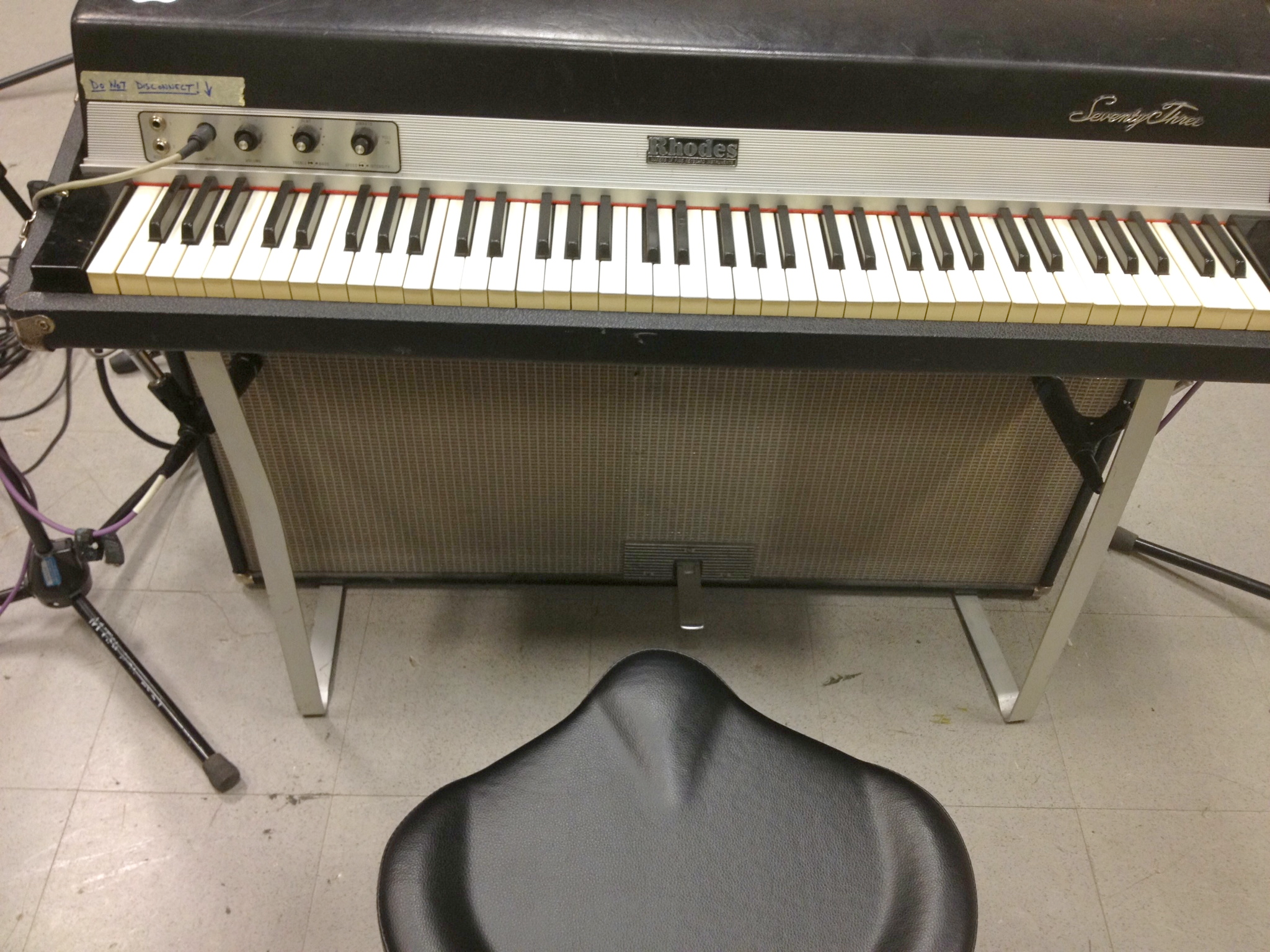The Fender Rhodes
By: Maria Elisa Ayerbe Barona
THE FENDER RHODES
1. Discussion of the instrument:
The Fender Rhodes electric piano is one of the most important musical inventions of the twentieth century. Harold Rhodes, a musician who worked as a flying instructor stationed in Greensboro, NC during the WWII, was asked to develop a musical therapy for wounded soldiers at the hospital. Rhodes designed a small piano that could be played in bed by the recovering patients. (Adlers)
The instrument was built with parts of aluminum tubes from a dismantled B-17 bomber plane which produced a special resonance. Rhodes used these as tuning forks for a 2½ octave (29 keys) acoustic piano instrument that resembled a xylophone. When the war ended, Rhodes manufactured an amplified 38-key electric version of his original instrument called the ‘Pre-Piano,’ with pickups for every tone bar, built-in tube amplifier and speakers. This instrument was presented at the NAMM convention in 1946. (Rhodes Music Corporation)
After developing different models over the years, Harold Rhodes returned to his original idea of building a full-size 73-key piano and the Fender Rhodes Suitcase 73 would be introduced into the market by 1969. It featured a black harp cover with volume, treble, bass and mono tremolo controls, and a 50W amplifier. The piano sits on top of a four speaker cabinet that also serves as a stand and includes the sustain mechanism. (Adlers)
This model would be embraced by many jazz musicians of the time (e.g., Ray Charles, Miles Davis, Bill Evans) that were desperately finding ways to make their acoustic pianos stand out amongst other amplified instruments like electric guitars and electric basses. A subsequent model called the Fender Rhodes Stage Piano would be developed between Leo Fender and Harold Rhodes; the Stage line progressed through the Mark I (1970), Mark II (1979) and the Mark V (1984), which were the last electro-mechanical pianos built by the Rhodes company. This model did not include a speaker cabinet like the suitcase. (Rhodes Music Corporation.)
The Fender Rhodes piano uses a steel tine as its main tone source. There is one tine per note with fundamental frequencies resonating in a range of 41 Hz to 2.6 kHz, for the 73-key model. When a key is pressed, a wooden hammer strikes the tine which is attached to a tone bar that extends above it. (Rhodes Service Manual.)
In the following quote taken from The Electromagnetically Sustained Rhodes Piano, Shear and Wright describe: “Each tine is paired with a tonebar and together they behave as an asymmetrical tuning fork. Although their fundamental frequencies are different, the tone bar stores energy from the initial hammer and helps to sustain the vibrations in the tine.” (Shear and Wright) This tuning fork can be found on Fig.1.
The tine provides a sound close to a bell-like tone, whereas the tone bar resembles a much full-rounded sound similar to a pure tone.
 Fig. 1: Rhodes Tuning Fork. Image borrowed from Rhodes Service Manual.
Fig. 1: Rhodes Tuning Fork. Image borrowed from Rhodes Service Manual.
There is one guitar pickup facing each tine, and the tone bar is fixed to the harp with two metal screws threaded through springs, which can be adjusted to change the position of the tine pointing at the pickup. (Rhodes Service Manual.) Adjusting the distance between the tine and the pickup will increase the output gain and according to the Fender Rhodes Manual, it will also increase the dynamic response (see fig. 2).
 Fig. 2: Volume Adjustment Diagram. Image borrowed from Rhodes Service Manual.
Fig. 2: Volume Adjustment Diagram. Image borrowed from Rhodes Service Manual.
When vibrating, the tine and pickup behave nonlinearly. This difference adds harmonic distortion to the original signal on the pickup. There is a notable change on the frequency spectrum due to the tine positioning; as the tip of the tine gets closer to the pickup axis, the fundamental and odd harmonics decrease, causing the second harmonics to rise as the strongest frequency of the spectrum. (Rhodes Service Manual.) As seen in figure 3.
 Fig. 3: Timbre Adjustment Diagram. Image borrowed from Rhodes Service Manual.
Fig. 3: Timbre Adjustment Diagram. Image borrowed from Rhodes Service Manual.
In figure 4, Greg Shear and Matthew Wright compare the spectra of a tone at 196 Hz with two different tine alignments to the pickup: one on-axis and the other 5 mm above the axis:
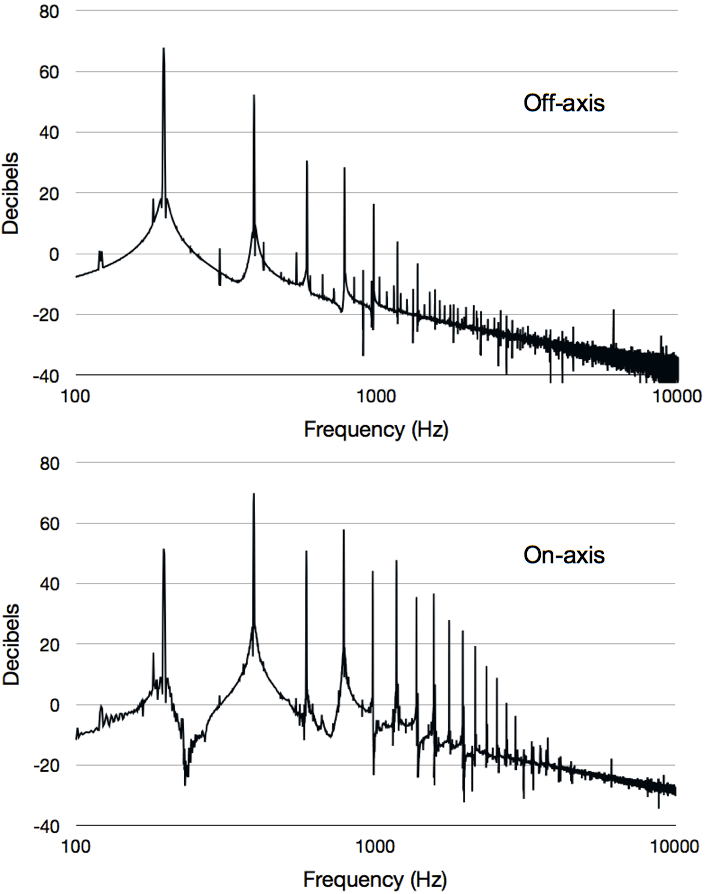 Fig. 4: Variation in harmonic distortion due to sensor/tine alignment. Image borrowed from The Electromagnetically Sustained Rhodes Piano.
Fig. 4: Variation in harmonic distortion due to sensor/tine alignment. Image borrowed from The Electromagnetically Sustained Rhodes Piano.
Off-axis settings produce a rounded, mellower tone whereas on-axis alignment sounds more mid-range with less low-end prominence. The solo on Earth, Wind and Fire’s “Shining Star” exemplifies a harsher on-axis tone. Rhodes’ recording of Yugoslavian jazz composer Bora Rokovic’s “Soft Hands Had the Rain” and Bill Evans’ album From Left To Right shows the mellower tone of the off-axis alignment.
The tines are hit by a wooden felt-covered hammer that works similarly to that of an acoustic piano. When the hammer strikes the tine, it oscillates and inducts the pickup, similar to the energy transduction of an electric guitar. The tine has permanent magnets wrapped around it, causing a damping effect as it moves, thus varying the electro-magnetic field around the pickup.
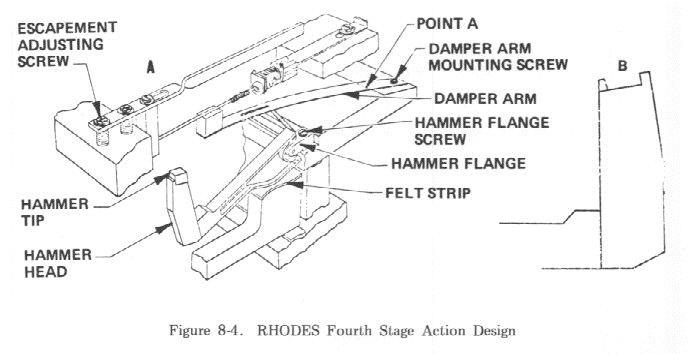 Fig. 5: Rhodes Action Design. Image borrowed from Rhodes Service Manual.
Fig. 5: Rhodes Action Design. Image borrowed from Rhodes Service Manual.
The output signal of a Fender Rhodes is weak, as in an electric guitar, and requires pre-amplification. All models include a ¼” jack output located at the front board of the piano that can be connected to a guitar amplifier. Guitar amplifiers such as the Fender Twin Reverb and the Roland JC -120 Jazz Chorus have been used in numerous famous Rhodes recordings (Herbie Hancock, Chick Corea, etc).
Choosing the adequate guitar amplifier for the Fender Rhodes should be a decision made to satisfy a number of requirements derived from the particular qualities of this instrument. First, the amplifier should be capable to reproduce a wider frequency range of an 88-keyboard instrument; most guitar amplifiers will lack low and high-end response. (Lebar) Second, guitar amplifiers add harmonic distortion to the incoming signal, particularly when volume is increased. This can modify the Rhodes’ original timbre. Finally, amplifiers such as the Fender Twin Reverb with Vibrato effect can recreate an effect similar to the Suitcase model.
Suitcase models were built with three amplification systems between 1966 and 1980. The Rhodes piano used for this instrument research assignment is a Peterson 80 Watt system, which consists of two Solid State 40 Watt amplifiers working with germanium power transistors. This 1975 Suitcase Piano has controls for volume and concentric knobs for treble/bass and Vibrato rate /depth. (Adlers)
The piano is mounted on a cabinet with four 32 ohms, 12-inch Eminence speakers, each pair located at the front and the back of the cabinet. This cabinet serves as the base of the keyboard and incorporates the sustain pedal mechanism. The power amplifier and the system’s power supply are also housed in the speaker enclosure. There is a 5-pin DIN cable that supplies +25 volts DC to the preamp, as well as carrying the audio signal and ground. (Adlers)
The 80W Suitcase amplifiers employ interstage phase-inverting transformers to couple the driver power stage to the output transistors, thus preventing DC turn-on transients from striking the output stage and the speakers.
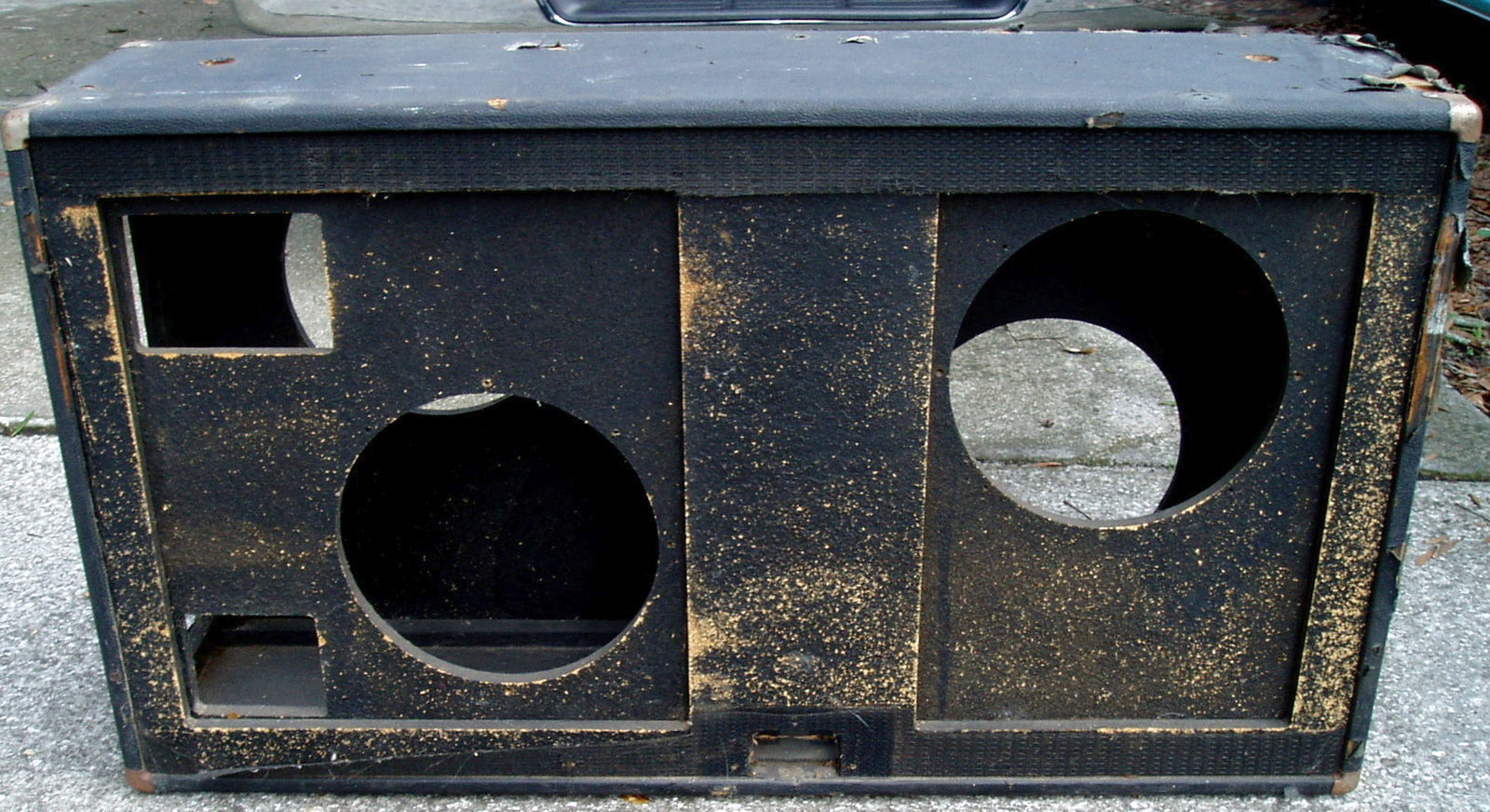 Fig. 6: Fender Rhodes Suitcase Wooden Cabinet
Fig. 6: Fender Rhodes Suitcase Wooden Cabinet
The original Rhodes provided a monophonic tremolo effect later mislabeled by Leo Fender as “Vibrato,” where the amplitude of the piano’s output was varied in a square-wave pattern effect. This effect became Stereophonic when Fender designed it, after the one found on Fender Twin guitar amplifiers. Basically, the amplifier switches a low frequency signal between each pair of speakers of the Suitcase cabinet (Left to Right) in a ping-pong type, creating a difference of amplitude between both. Long, atmospheric Vibrato effects can be found in Herbie Hancock’s albums Mwandishi (1971) and Crossings (1972). (Opstad 59)
It would be thanks to Miles Davis that the Rhodes piano would have its deepest influence on modern music. Davis’ search for new sounds in jazz music allowed him to gather Herbie Hancock and Chick Corea to play the Rhodes on the 1969 recording sessions for the album Bitches Brew. Three simultaneous Rhodes pianos were recorded and blended, creating experimental sounds with new and distorted timbres. The pianos used for this session featured wooden piano hammers and un-tampered Ray-Mac tines (fig. 7). The combination of these two elements produced a strident, bell-like sound which pioneered Rhodes recordings. (Adlers)
When speaking in conversation about this album, Dr. James Piekarsky from Middle Tennessee State University explained how later on Chick Corea would develop his own Rhodes sound by removing the hammer felt tip, thus allowing the hammer to strike the tine directly. This gave his Rhodes a percussive and striking sound, noticeable in all of his jazz recordings between 1970 and 1980. Corea would also position the tines very close to the pickups, almost on top of them. This would overdrive the amount of signal coming into the pickup and increase the second harmonic spectra, as described by Shear and Wright.
Chick Corea would also process the output of his Fender Rhodes using a ring modulator guitar pedal called Moogerfooger. This effect modulates a fixed-frequency oscillator and outputs the sum and the difference of its frequencies. The result is a signal enhanced with partials and harmonics, suitable for creating bell-like sounds similar to those of a percussion instrument.
2. Research Explaining Recording Techniques:
Wayne Wadhams explains two main obstacles for recording Fender Rhodes, as pointed out in his book Sound Advice: The Musician’s Guide to the Recording Studio. On one hand, the Rhodes’ sound-production mechanism creates abrupt transients when hammers strike the tines: “Instantaneous output levels of nearly a full volt can overload the input stage of everything from direct boxes and recording consoles to effects boxes and guitar amps.” (Wadhams 217).
Limiting the recorded signal with fast attack and high ratio can easily solve such problems. Fast transients can be controlled easily, thus gaining dynamic range for boosting the output signal and raising the level of the natural decay. (See fig. 8)
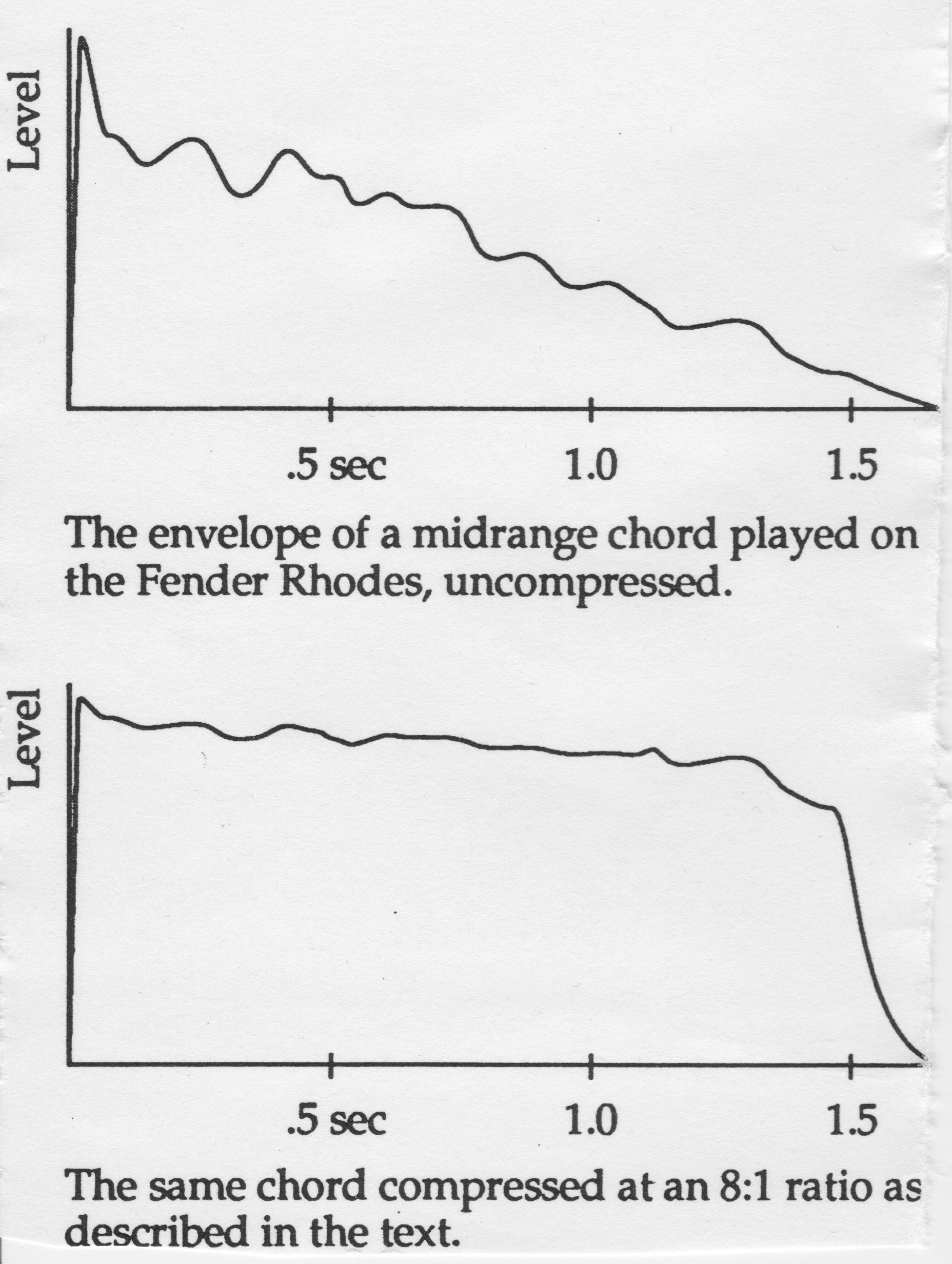 Fig. 8: Envelope of a Fender Rhodes Uncompressed vs. Compressed. Image borrowed from Sound Advice: The Musician’s Guide to the Recording Studio.
Fig. 8: Envelope of a Fender Rhodes Uncompressed vs. Compressed. Image borrowed from Sound Advice: The Musician’s Guide to the Recording Studio.
On the other hand, a metallic timbre is generated when playing keys one octave above the C-5 and up. This makes the Rhodes recording process complicated and introduces special attention when mixing it with other instruments, as Wadhams adds in an article published by Downbeat Magazine in 1984:
“The musical tone produced from about middle C up consists mainly of pure sine waves at the fundamental and first two overtones. While this gives the instrument its pure, bell- like sound, it means that right-hand chords are clusters of midrange sine waives with lots of sustain. Sine-clusters can cause beating between notes, sometimes in harmonic overtones (intermodulation distortion)… Musically, the midrange clusters tend to crowd- out the audibility of other instruments playing these same notes.” (Wadhams 53)
As a solution for this problem, Wadhams suggests attenuating the frequency range of the signal from the DI box around the middle C (500 Hz) by 4 to 6 dB and smoothly increase the range between 5 to 6 kHz. (Wadhams 217)
The recording techniques applied for this particular instrument research were aimed at accomplishing the best-recorded sound of the cabinet of a Fender Rhodes Suitcase piano. This decision was made based on the fact that standard recording approaches found in scholarly texts, including Mr. Wadhams’ book, focus predominantly on recording the Fender Rhodes straight from its direct outputs.
As found in Rick Clark’s book Mixing, Recording, and Producing Techniques of the Pros, Recording Engineer Leanne Ungar preferred miking the cabinet in order to obtain a “more aggressive sound.” “To bring out the attack and clean up the midrange, I generally cut at 400 Hz and boost 1.5kHz on an API EQ,” she explains (qtd. in Clark 167).
Particular attention for this research was given in placing microphones in different positions away from the cabinet that would capture how tone quality1 changes as microphone placement varies in distance and angle from the speaker (such as shown in Figs. 8 and 9). For this matter, close microphone placements and combinations used for recording guitar amplifiers were chosen (e.g. on-axis and off-axis with speaker), as suggested by studies such as Tonal Effects of Close Microphone Placement by Bruce Bartlett. Different types of microphones and transducers were employed at the recording location. Additionally, this recording session aimed at exploring how the microphones captured the Vibrato effect in the cabinet.
Other popular effects used on the Fender Rhodes are: Wah-Wah pedals, Fuzz pedals and Chorus Pedals (BOSS CE-1 Chorus Ensemble). Many DAWs nowadays feature virtual instruments that simulate the classic Rhodes Vibrato sound by using stereo auto-panning processors, where the speed of the panner will be adjusted manually to work with the tempo of the song. (Gibson, 114.)
3. Statement of Learning:
The 1975 Suitcase Piano used for the recording was not at its best condition, which altered the overall tonal quality and timbre of the instrument. Unfortunately, this was the only Fender Rhodes Suitcase piano available at the time for this research.
As seen on figures 11 and 12, tines are not consecutively aligned in height and distance with the pickups throughout the harp of the piano. This radically affects the way each note sounds, as noted previously. Gain and timbre varied notably per key after listening through the recordings.
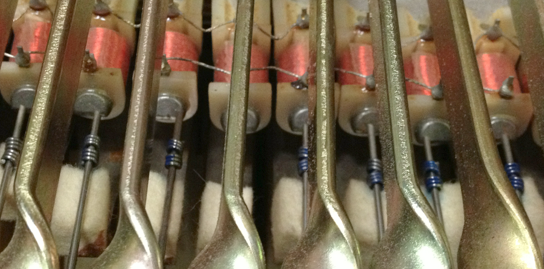
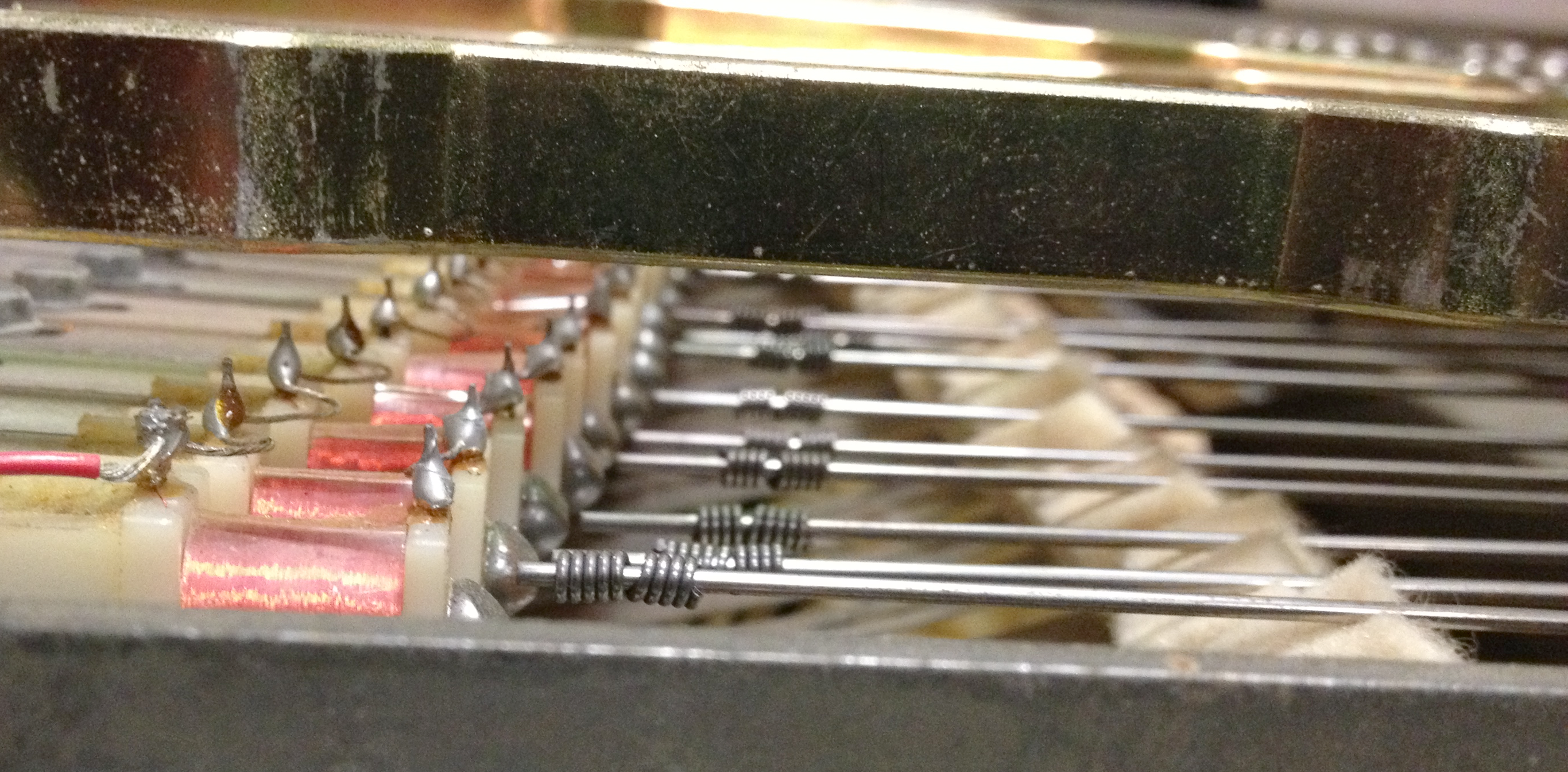 Fig. 11 and 12: Tine alignment of the recorded Fender Rhodes
Fig. 11 and 12: Tine alignment of the recorded Fender Rhodes
Unevenness between the heights of some hammer heads along with missing hammer tips (Figure 13) also affected the tone produced when striking such keys. Some keys had the characteristic bell-like sound, while the keys with no hammer head sounded clunky and dampened. These issues were evident on the signal recorded from the preamplifier straight to a DI Countryman box.
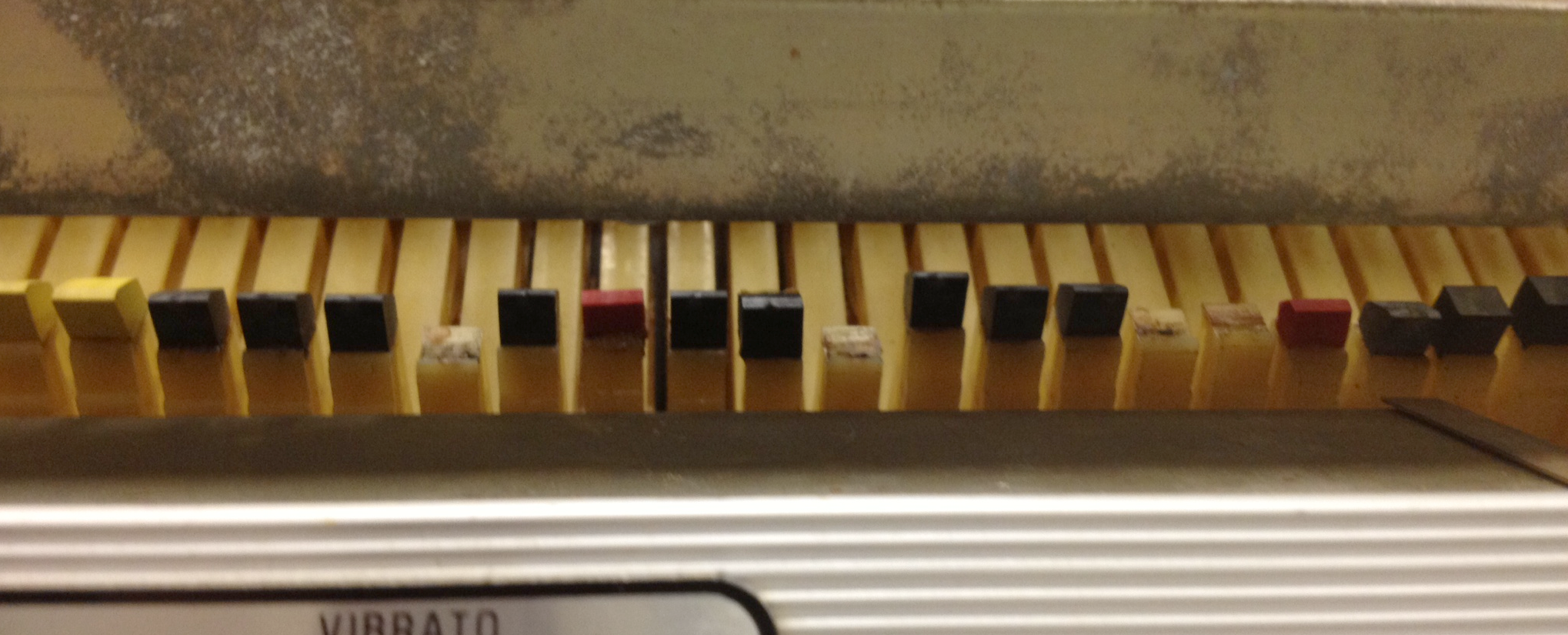 Fig. 13: Hammer heads of the recorded Fender Rhodes
Fig. 13: Hammer heads of the recorded Fender Rhodes
All of these situations reveal the importance of regular maintenance of the instrument. As Dr. Piekarsky mentioned, almost any Rhodes player needs to learn how to repair his piano in order to preserve the instrument’s sound quality.
As for the Suitcase recording, several results derived from the different sets of microphones and their placements. A notable outcome was the distortion amount on the signal coming from the front speakers. These speakers sounded over-driven and buzzy (specially the left speaker), while the back speakers had basically no distortion at all. This may happen as a consequence of broken circuitry or age-worn cones at the front of the cabinet. Vibrato was perceived louder and mellower at the back part of the cabinet.
In order to compare the sonic differences between the sides of the cabinet, a single note E3 (163 Hz) was recorded intro Pro Tools at 44.1 kHz, 24 bit sample rate and using the API Vision pre amplifiers. No signal processing was applied. Later on, each audio file’s spectrum was analyzed using Audacity.
The 2nd, 3rd, 4th and 5th harmonics of the fundamental are present and distinguishable in all microphones spectra. These overtones form a major triad with the fundamental tone (E, G# and B). High-end harmonics are less noticeable than lower ones, as they decay faster in time, but they contribute to the characteristic “bell-like” sound of the Fender Rhodes.
The condenser microphones (Neumann TLM 103) captured the buzz louder at the front of the cabinet. In the spectrum substantial amount of high frequency content can be observed after 1.5 kHz. The fundamental tone E3 (163 Hz) is the loudest at -15.4 dB, followed by a partial centered around F#5 (741 Hz) at -19.9 dB. A lower harmonic tone is prominent at 81 Hz (E2), as seen in figure 14.
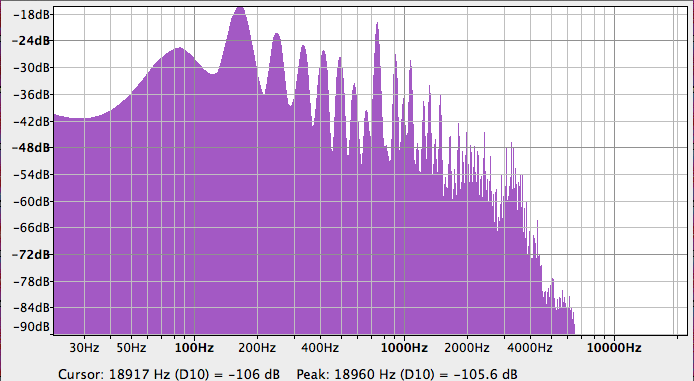 Fig. 14: Spectral analysis of Fender Rhodes recorded with Neumann TLM 103, placed on-axis from each cone, 6 inches away from the front of the cabinet.
Fig. 14: Spectral analysis of Fender Rhodes recorded with Neumann TLM 103, placed on-axis from each cone, 6 inches away from the front of the cabinet.
Similarly, the Sennheiser MD 421 placed off-axis picked up the same buzzed distortion but provided an emphasized mid-range accented tone (distinctive of dynamic microphones); one that would fit appropriately when an over-driven, “in-your-face” sound is desired. However, high frequency content decays faster and there is less low frequency response than in the TLM 103 recording. (Fig. 15)
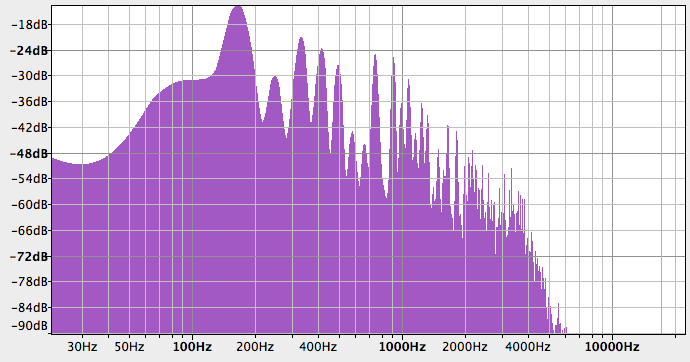 Fig. 15: Spectral analysis of Fender Rhodes recorded with Sennheiser MD 421, placed off-axis from each cone, in front of the cabinet.
Fig. 15: Spectral analysis of Fender Rhodes recorded with Sennheiser MD 421, placed off-axis from each cone, in front of the cabinet.
A narrower image was captured by the XY pair (Schoeps CMC5) located five feet away from the front of the cabinet. A near coincident stereo technique would have provided a wider image for identifying the Vibrato bouncing from cone to cone. Although this recording lacks the buzz noise from the cabinet, the room ambience is noticeable along with the performer’s movements while playing. The room rumble can explain the increase in the low frequency response of the microphone. (Fig.16)
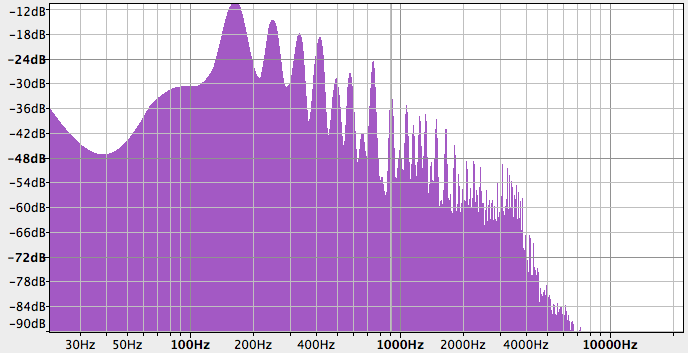 Fig. 16: Spectral analysis of Fender Rhodes recorded with XY stereo pair. Schoeps CMC5, placed five feet away from the front side of the cabinet.
Fig. 16: Spectral analysis of Fender Rhodes recorded with XY stereo pair. Schoeps CMC5, placed five feet away from the front side of the cabinet.
Simultaneously, the SM57 microphones placed at the back of the cabinet off-axis with the speakers provided a clearer and rounded tone. Harmonic content decays slower, particularly at the undertone located at 81 Hz (E2). This may explain why the Vibrato effect sounds warm and sustained with these microphones. (Fig. 17)
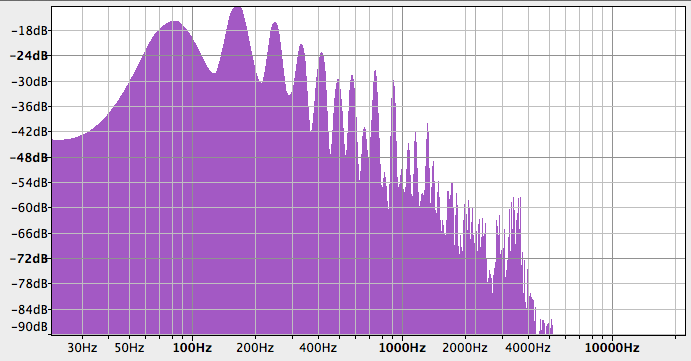 Fig. 17: Spectral analysis of Fender Rhodes recorded with Shure SM 57, placed off-axis from each cone, in front of the cabinet.
Fig. 17: Spectral analysis of Fender Rhodes recorded with Shure SM 57, placed off-axis from each cone, in front of the cabinet.
WORKS CITED
Adlers, Frederik, and James Garfield. “The Rhodes Super Site.” FenderRhodes.com – The Rhodes Super Site. The Rhodes Super Site ©, 1999. Web. <http://www.fenderrhodes.com/>. Mar. 2013.
Bartlett, Bruce A. “Tonal Effects of Close Microphone Placement.” Audio Engineering Society 29.10 (1981): 726-38. Web. 15 Apr. 2013.
Clark, Rick. Mixing, Recording, and Producing Techniques of the Pros. Boston: Course Technology, 2011.
Gibson, Bill. “Chapter Five: Acoustic Piano and Rhodes.” The AudioPro Home Recording Course : A Comprehensive Multimedia Audio Recording Text. Emeryville, CA: Mix, 1999. 114. Print.
Lebar, Ron. “Alpha Entek, Rhodes Piano Restoration.” Alpha Entek, Rhodes Piano Restoration. Alpha Entek, Rhodes Piano Restoration, 28 Aug. 2010. Web. Mar.-Apr. 2013. <http://www.alphaentek.com/rhodes.htm>.
Opstad, John. “The Harmonic and Rhythmic Language of Herbie Hancock’s 1970s Fender Rhodes Solos.” (n.d.): n. pag. Rpt. in Jazz Perspectives. 1st ed. Vol. 3. N.p.: Routledge, Taylor & Francis Group, 2009. 57-59. April 2009. Routledge, Taylor & Francis Group. Web. 25 Mar. 2013. <http://www.tandfonline.com/doi/full/10.1080/17494060902778126>.
“Rhodes Music Corporation: History.” Rhodes Music Corporation. N.p., 2011. Web. 25 Mar. 2013. <http://www.rhodespiano.com/history.htm>.
“Rhodes Service Manual.” Rhodes Service Manual. CBS Musical Instruments A Division of CBS Inc., n.d. Web. 25 Mar. 2013. <http://www.fenderrhodes.com/
Shear, Greg, and Matthew Wright. “The Electromagnetically Sustained Rhodes Piano.” Diss. University of California, Santa Barbara., 2011. The Electromagnetically Sustained Rhodes Piano. University of California, Santa Barbara. Media Arts & Technology. 2011. Web. 02 Apr. 2013. <http://collaboratorium.mat.ucsb.edu/Publications/Shear_Wright_NIME_2011.pdf>.
Wadhams, Wayne. “The Grand Piano and Fender Rhodes Electric Piano.” Sound Advice: The Musician’s Guide to the Recording Studio. New York: Schirmer, 1990. 216-17. Print.
Wadhams, Wayne. “Recording On A Budget: Acoustic & Rhodes Pianos.” Downbeat 01 Sept. 1984: 52- 53. Print.
1 The tone quality or timbre of a musical instrument is mainly the perception of its spectrum or harmonic structure; that is, the number, frequency, and relative amplitudes of its fundamentals and overtones. (Bartlett 726)


